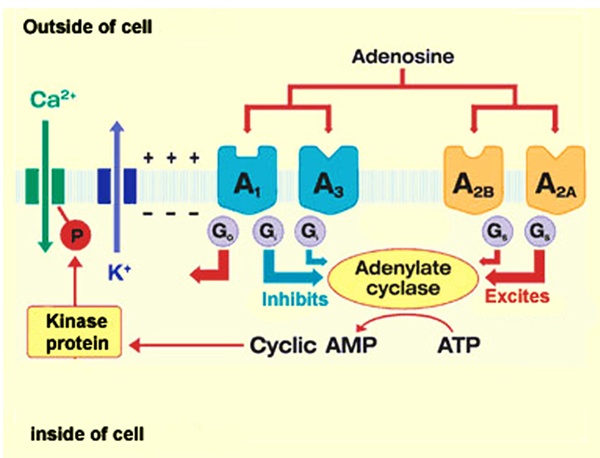Answer: There are four main receptors for adenosine in the body: A1, A2a, A2b, and A3.
Adenosine is a nucleoside neuromodulator. It is produced naturally during cellular activity. Adenosine is stored in synaptic vesicles, and after release of neurotransmitters, the adenosine is released into the synapse where it can act as a ligand at one of four receptors. The two most widely expressed receptors in the brain are A1 and A2a, while the A2b and A3 are expressed at sites outside the brain.
The adenosine A1 receptor, A1R, is coupled to the Gi/o protein which decreases cyclic AMP signaling in the cell. At a synapse, it acts to decrease release probability.
The A2a receptor is Gs coupled, which increases adenylyl cyclase that in turn increases cAMP signaling.
A2b is coupled to both the Gs and Gq proteins. Gs increases cAMP signaling which is excitatory, and the Gq protein is linked to phospholipase C, which is linked with DAG and IP3.
A3 is Gi/o coupled, which like the A1R, decreases cellular excitability through decreased cAMP.
